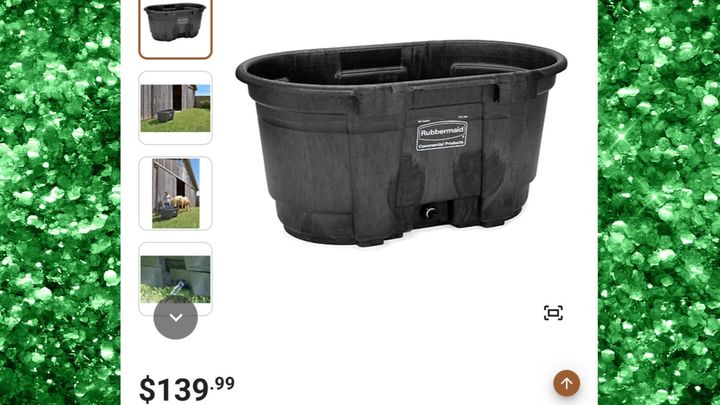
Hay trough for the boys
Tax deductible
So much MUD and dirt has brought the need for an additional hay trough for the boys pasture!
The cost is $133 at our local Tractor Supply store! I’m picking one up today so it’d be INCREDIBLE if anyone donates to help cover this bill for the boys of Sunshine Animal Sanctuary!
We have our 2 yr old Alpine wildie gelding, Lil Bobby and our 20 yr young BLM donkey RJ who share a pasture & feeding area. They eat together frequently but definitely enjoy their space at times. We currently have one hay trough & 2 feed mats but the feed mats still get very messy w the dirt/mud.
We do everything possible to prevent sand colic by having mats/troughs to put their hay in. They obviously do throw some hay out on the ground but the troughs are MUCH better than the mats at lowering the amount or dirt/sand ingested when they’re eating!
INFORMATION - Sand colic in horses, also known as impaction colic, is a condition caused by the accumulation of sand in the digestive tract, leading to abdominal pain and other symptoms. It's particularly common in areas with loose, sandy soil where horses are fed on the ground or graze short grass.
Here's a more detailed explanation:
Cause:
Horses inadvertently ingest sand while grazing or eating hay from the ground, especially in sandy areas.
***Prevention***
The most important factor in preventing sand colic is management and reducing horses' access to sand.
Feed off the ground: Use tubs, haynets, or feeders to prevent horses from ingesting sand with their food.
Provide adequate fiber: A diet rich in hay and other fiber sources can help the digestive system move sand through the colon.
Consider psyllium: Regularly administering psyllium can help to bind and remove sand from the digestive tract.
Manage pastures: If possible, avoid grazing horses in sandy areas or pastures with poor vegetation growth.
Organizer
Kelly Kilmain
Organizer
Surprise, AZ
Sunshine Animal Sanctuary
Beneficiary
